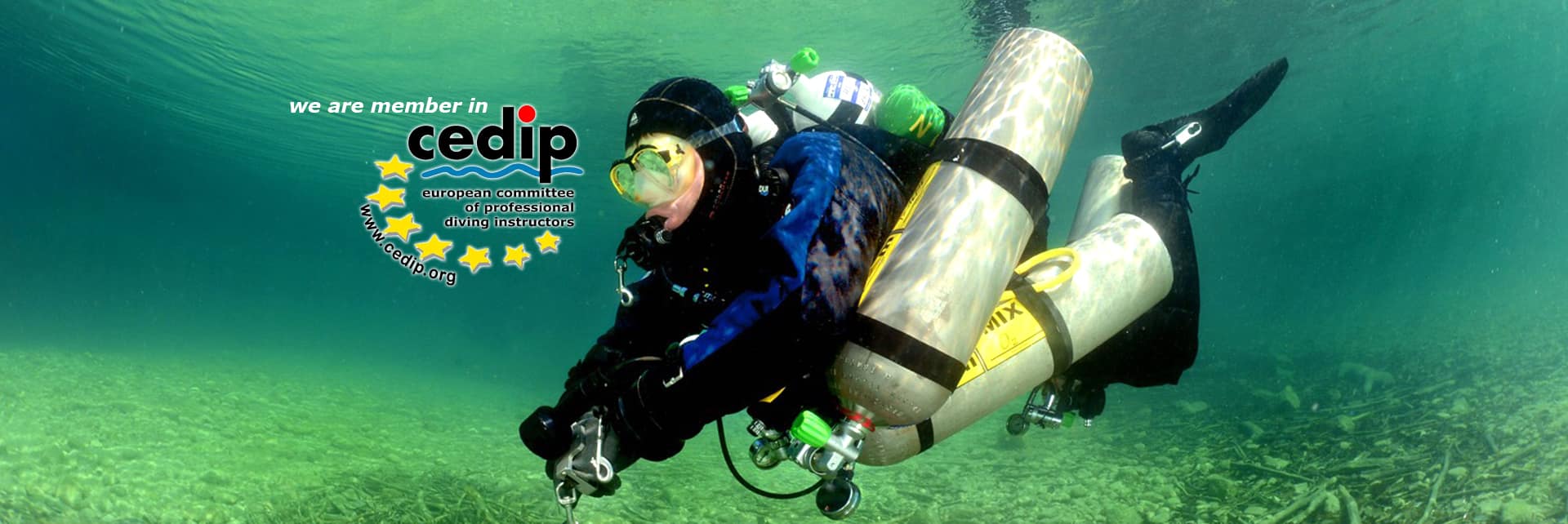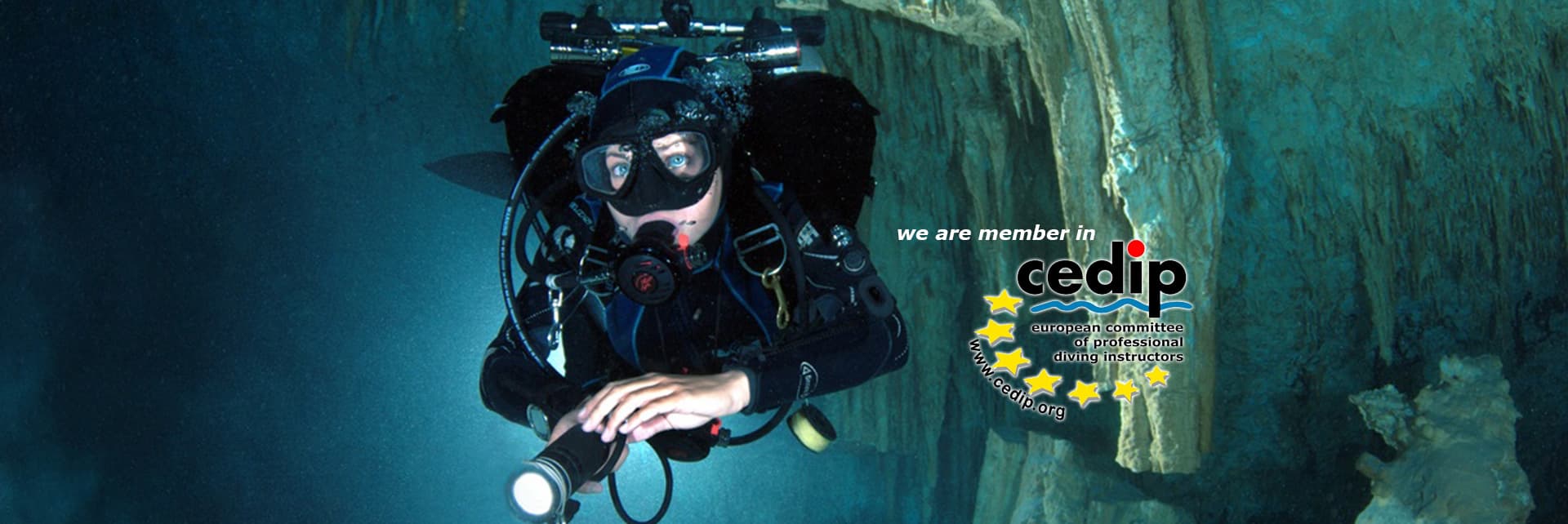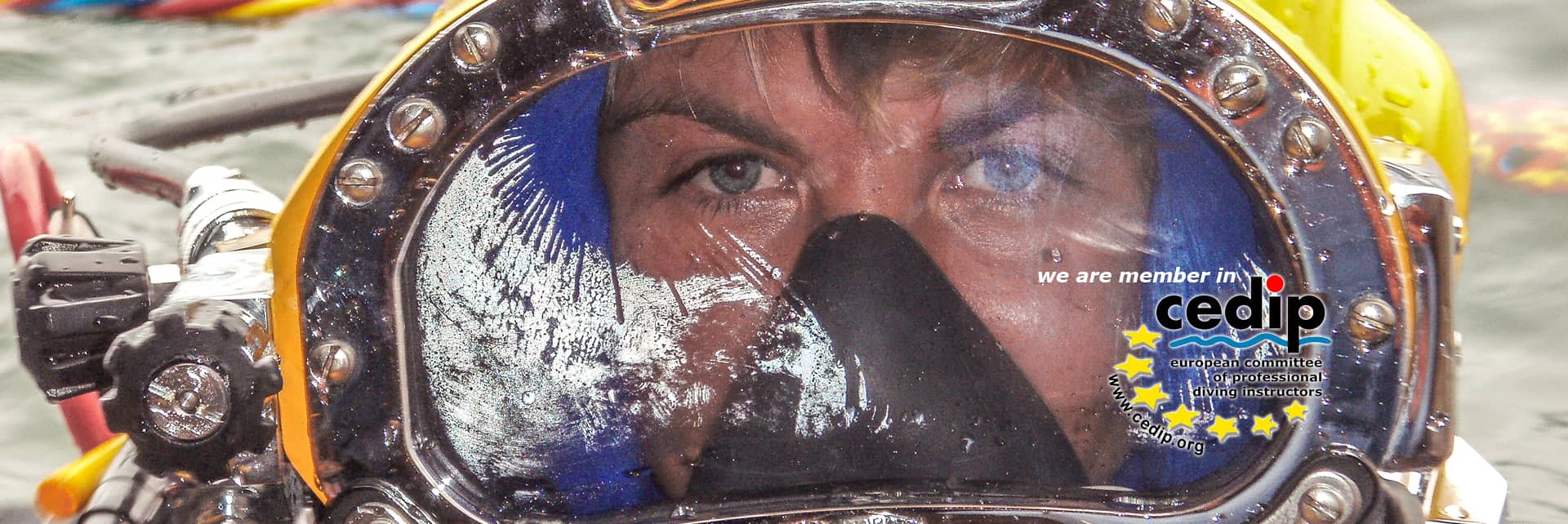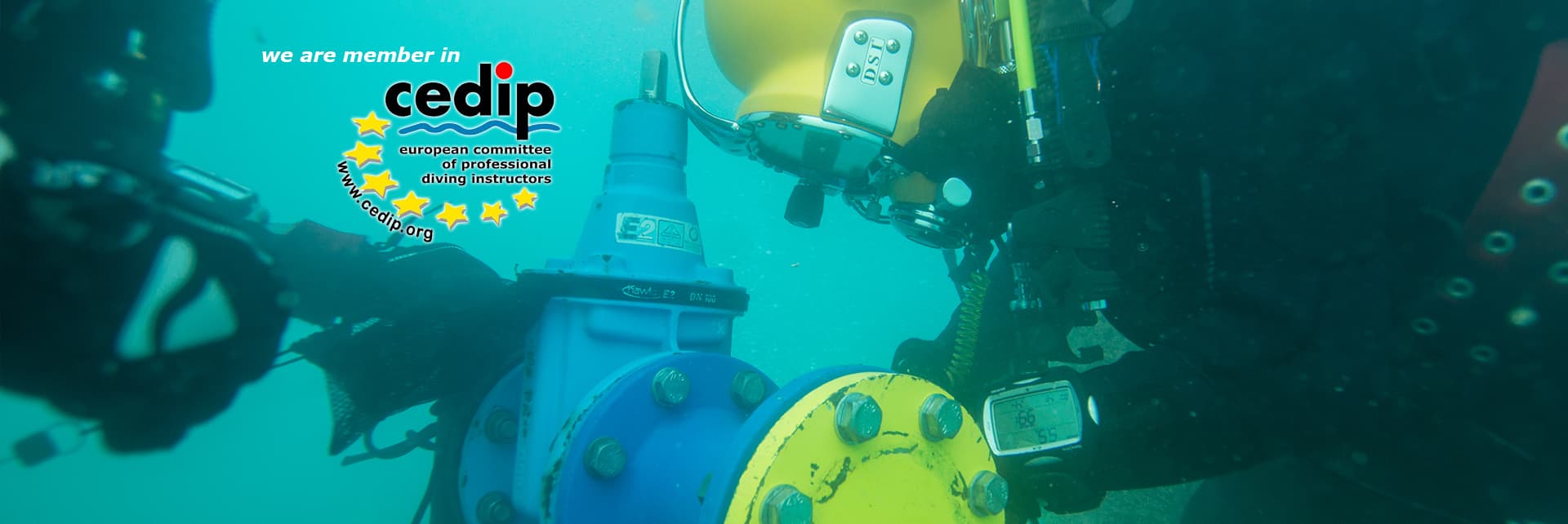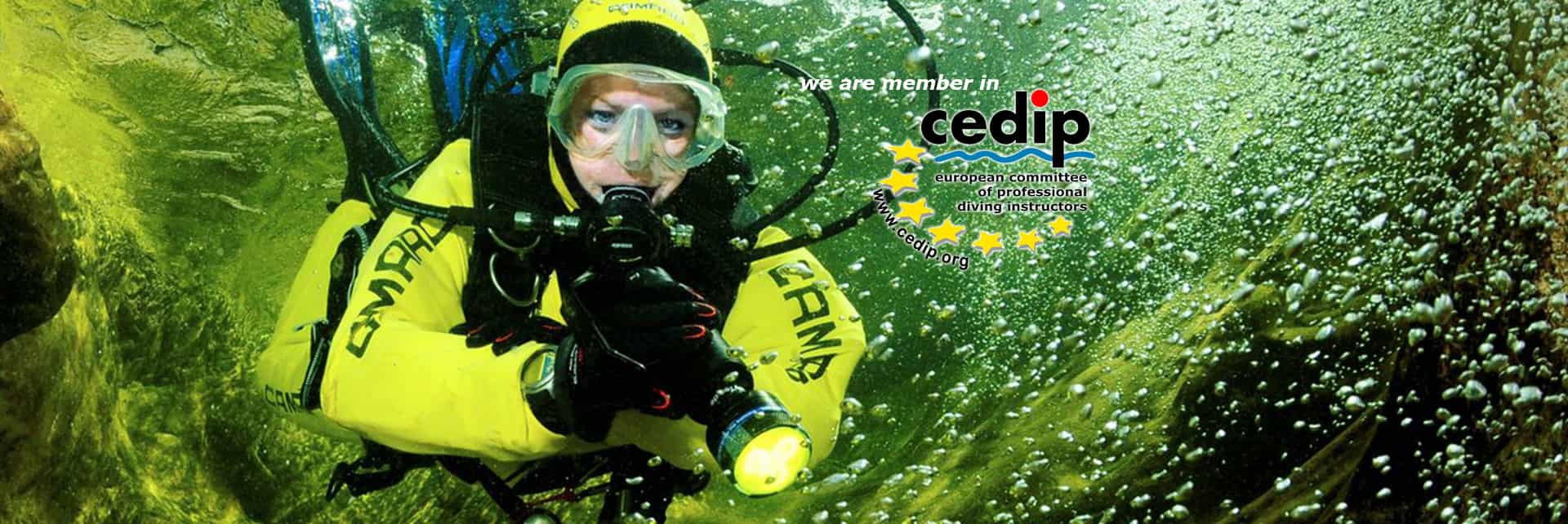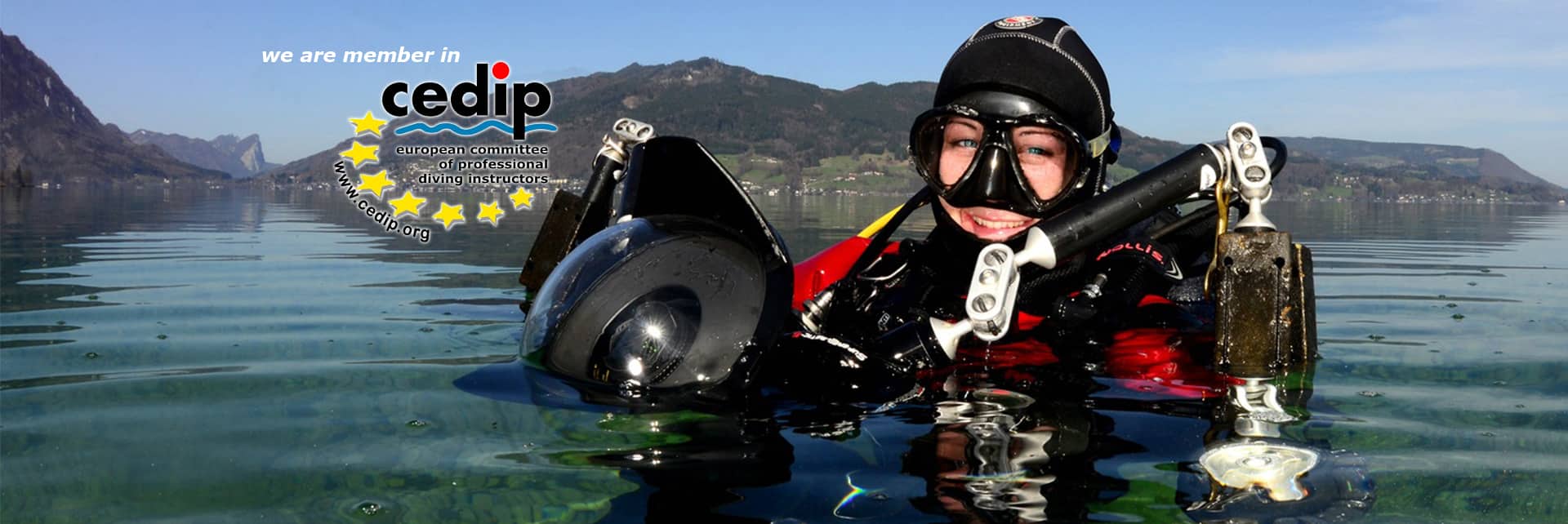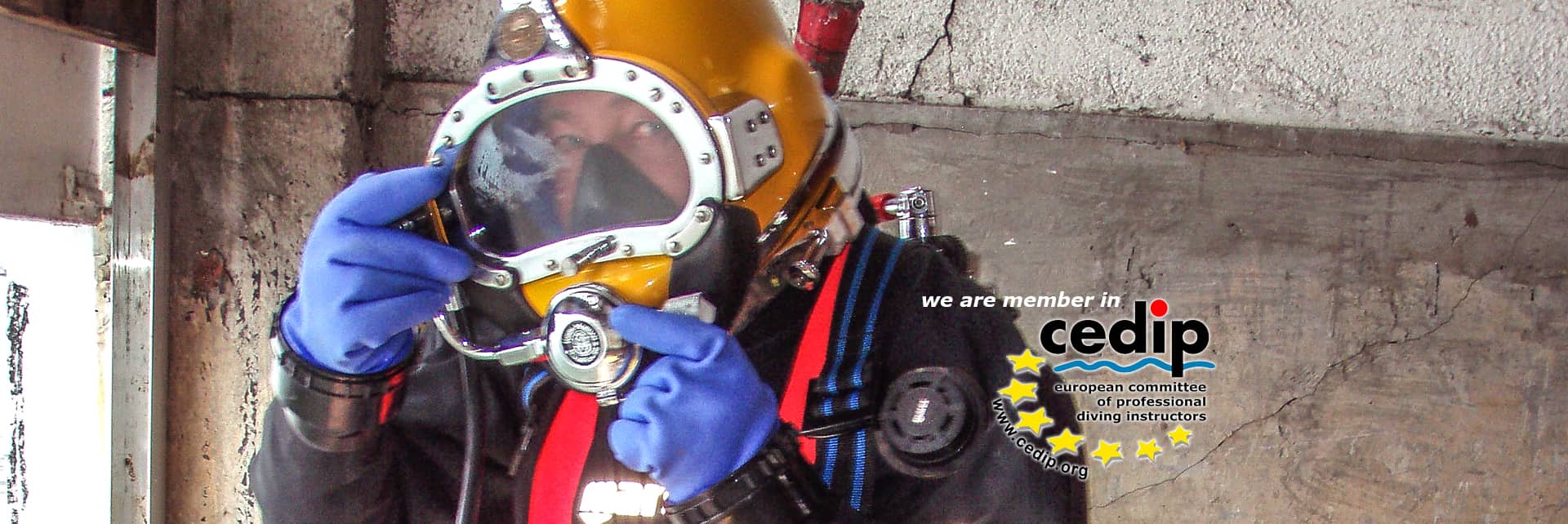Conscious diving with the EOBV
The small 1 x 1 of ecology
Conscious diving with the EOBV
The EOBV was one of the first diving associations to include ecological aspects in their teaching content and pass them on to the diving students. What is the purpose of the diving pioneer and honorary member of the EOBV, Professor Dr. Hans Hass, gave his contribution and various suggestions. It has long been in the spirit of the EOBV to sensitize not only the diving instructors, but also the diving students with regard to the nature of the underwater world and to promote diving that is aware of the environment. The underwater area in particular is very sensitive to external disturbances due to its inherently constant living conditions. Anyone seeking relaxation who uses this living space for their own relaxation should always be aware of this. With the help of this article, interested divers might be able to build up ecological knowledge that will lead to ecologically careful behavior.
Unfortunately , ecology also uses ones own vocabulary, which is probably not accessible to everyone. Therefore, I would like to present some of these terms here and explain.
Ecology deals with connections and dependencies. It describes the interaction of organisms with their environment. Basically, the entire biosphere of the earth is the area in which life takes place (from the deep sea to the lower layers of the atmosphere) a single ecosystem. The rainforest of South America influences us just as much as the Sahara. The fact that we are climatically and thus also economically dependent on ocean currents can also be clearly seen from the effects of the “E l Nino” phenomenon. For the sake of simplicity, the earth is divided into “sub-units” (ecosystems), as it is easier to look at smaller habitats. An ecosystem can be a lake, an ocean, a mountain range, a forest, or even a pond or a piece of dead wood with its characteristic inhabitants.

An ecosystem is defined as the sum of habitats (biotopes) that a system offers and the characteristic communities (biocoenoses) that occur in it:
Ecosystem = biotopes + biocoenoses
Within this system, each species occupies an ecological niche. Different species can occupy the same habitat, but never the same niche.
An ecological niche can be understood spatially (different habitats: e.g. fish in the shore area or fish in the open water), but such a niche can also be understood in terms of time.
Animals share the same habitat, however, one species is diurnal and the other nocturnal. Normally, niches that a system offers are also occupied. You could compare these niches with our professional groups.
A healthy ecosystem is in a state of homeostasis, ie the system is in dynamic equilibrium. The number of species and individuals regulates itself, the flow of energy through the system is constant:
Energy input = energy loss.
The more complex the relationships in a system, the more stable it is usually.
However, if systems are disturbed (environmental changes, human influences…), they try to settle into a new homeostasis, if this does not succeed, they collapse.
For every living being – bacteria, plants, lower animals, fungi, higher animals – there are influences from the inanimate (abiotic) and from the animate (biotic) environment.
Abiotic influences:
- TEMPERATURE
- WATER
- SUNLIGHT
- WIND
- ROCK AND EARTH
- PERIODIC DISTURBANCES
- CURRENT
- WATER CIRCULATION
Biotic influences
All types of communities:
Eg:
- ROBBER R – LOOT RATIO
- SYMBIOSES
- PARASITISM
- FOOD CHAINS AND NETWORKS
As mentioned above, these relationships are disrupted by events (natural disasters, long-term changes such as pollution, or climate change, economic use, recreational use).
The faster the changes are , the less the system is able to adapt.
Overall, divers are not a major disruption at the moment. In some heavily frequented areas, such as Sharm el Sheik on the Red Sea, far-reaching consequences of diving operations can nevertheless be observed. The pristine reefs that I was still able to enjoy in 1989 have given way to a rocky desert of dead coral at some dive sites.

The coral bleaching of some Maldives atolls, which was caused by the warm and much too long-lasting ocean current “El Nino”, can be clearly seen in many places. Corals normally live in symbiosis with algae (zooxanthellae). The coral polyp provides protection, the algae provides the polyp with food. If the water gets too warm, the algae migrate and this leads to coral bleaching. If the separation lasts a few weeks, the polyps die and entire reefs disappear. This can currently be observed, for example, on the Maldives but also on the Great Barrier Reef in Australia.
Our lakes react just as sensitively if no value is placed on environmentally friendly behaviour . We move mainly in the very sensitive habitat “riparian zone” , which is a refuge for many animal species and above all their nursery, but which is also the main habitat for underwater plants. It is therefore important to reduce the impairment to a minimum when entering and to use fixed entrances where available.
Especially the productivity of the underwater vegetation can e.g. B.: be sensitively disturbed by sloppy taring . If sediment is whirled up, it settles on the plants, their ability to photosynthesize is reduced and there is less food available for animal lake dwellers overall. Apart from some bacteria, plants are the only living things that can convert the sun’s energy into organic matter. To do this, the light must at least penetrate into the upper cell layers, which is made more difficult when covered with sediment.
EOBV Head of Ecology, Mag. Christian Hofinger
Photos: Heinz Toperczer, Stefan Arnesch
